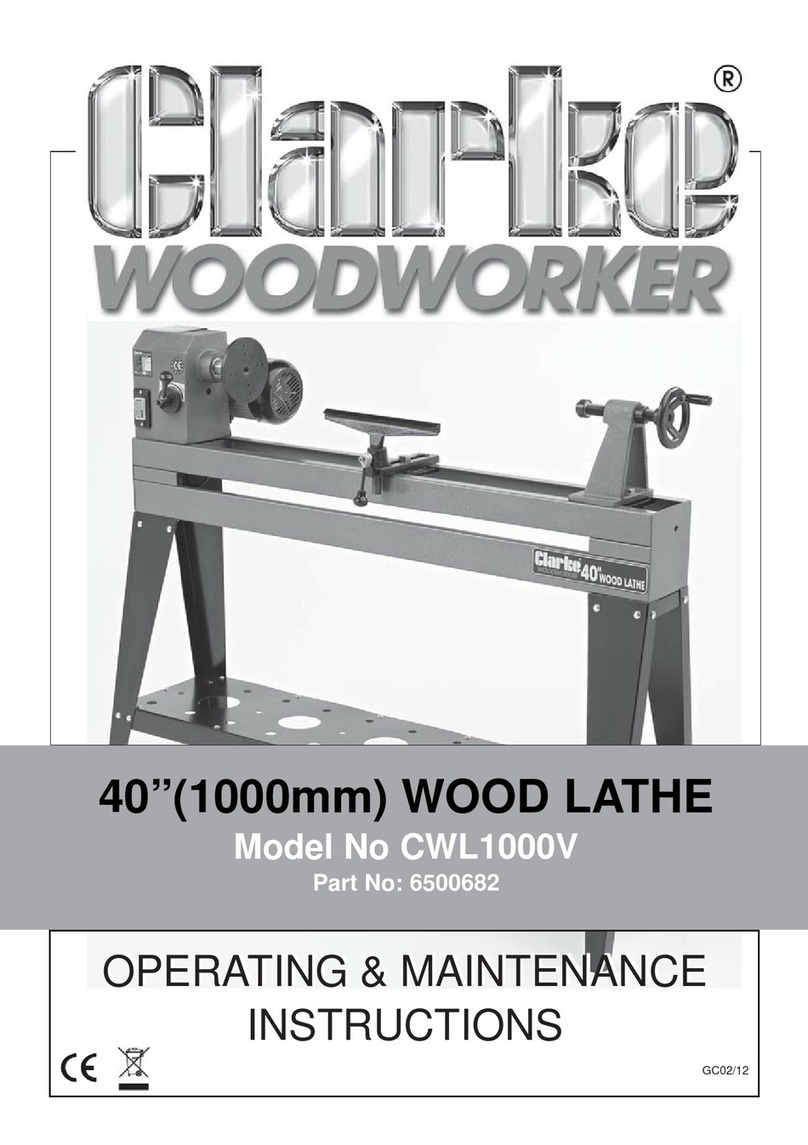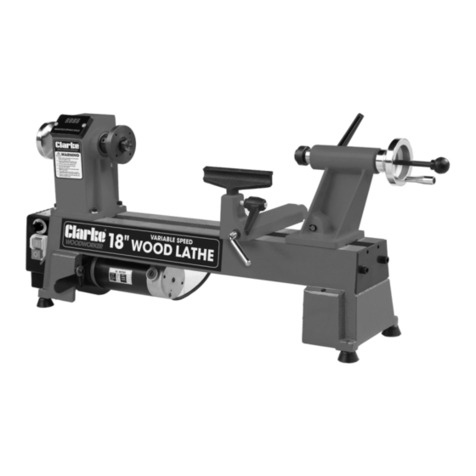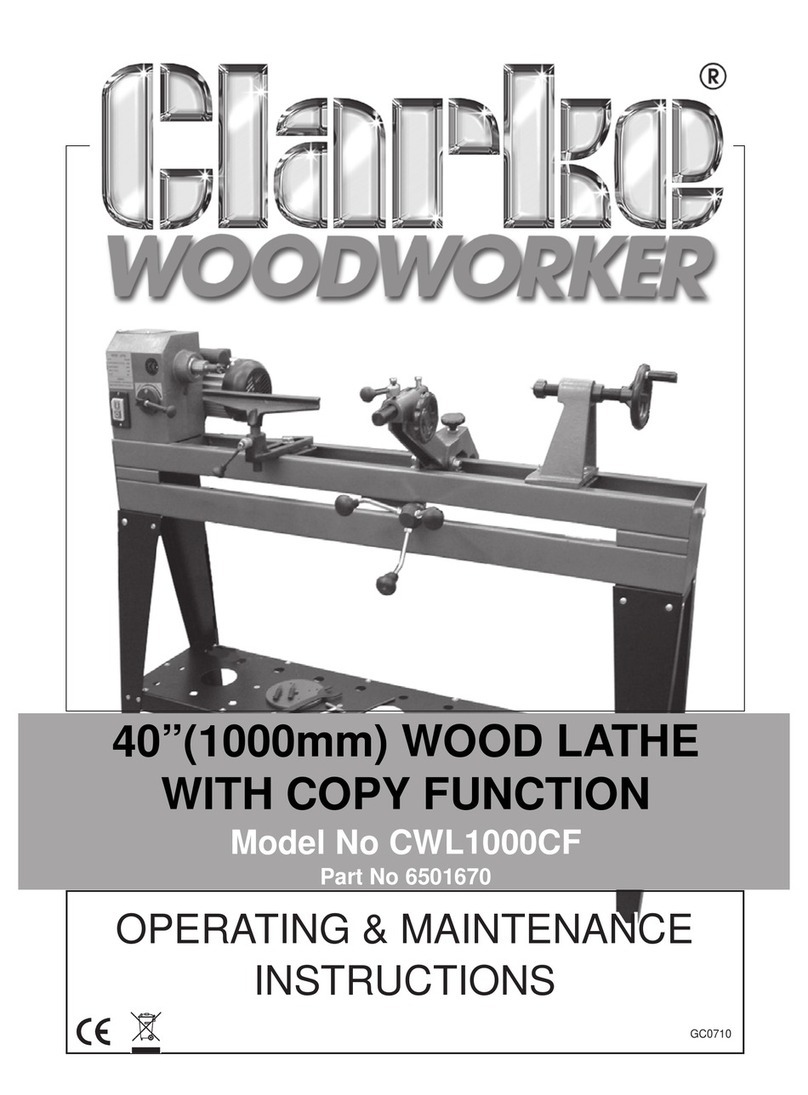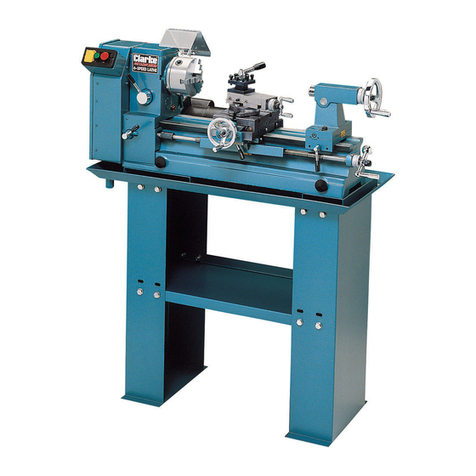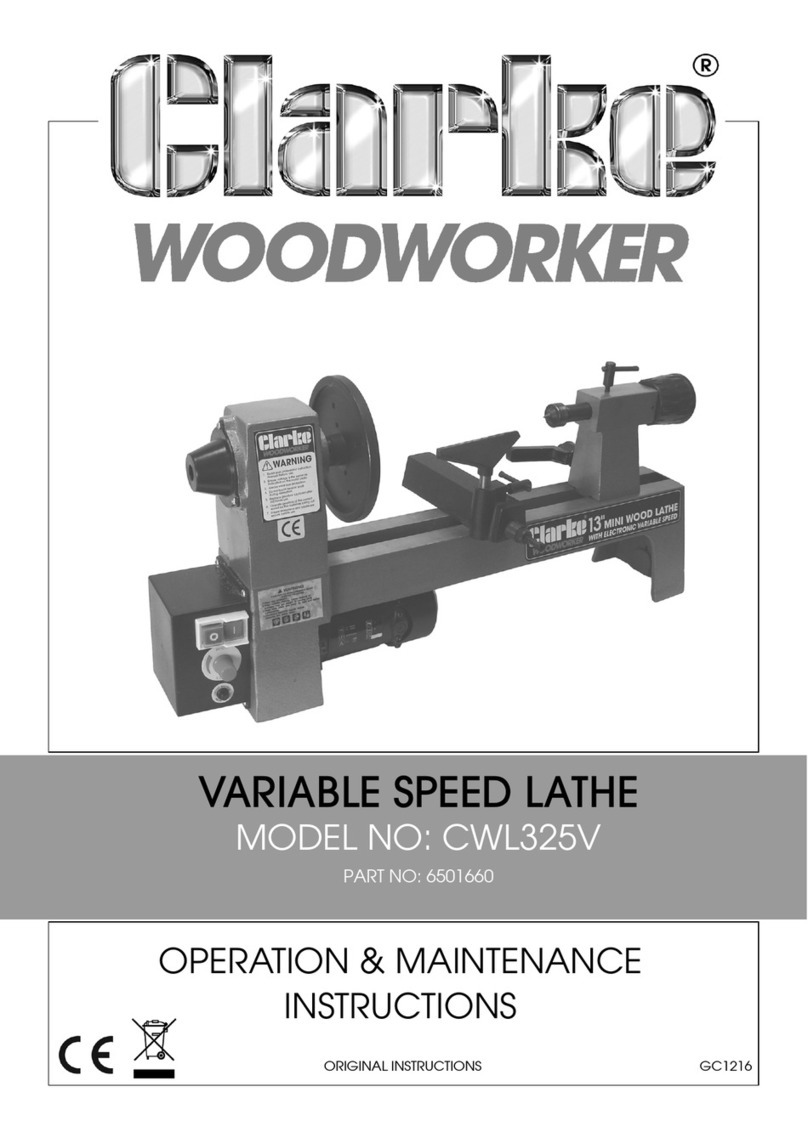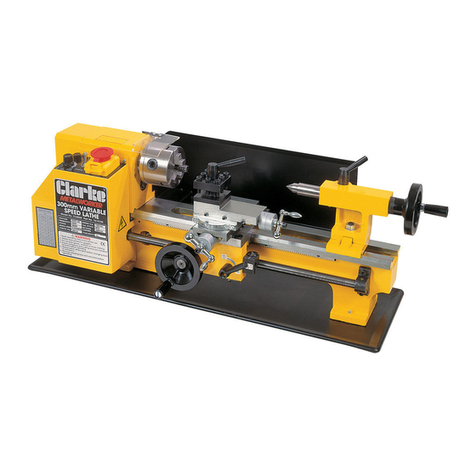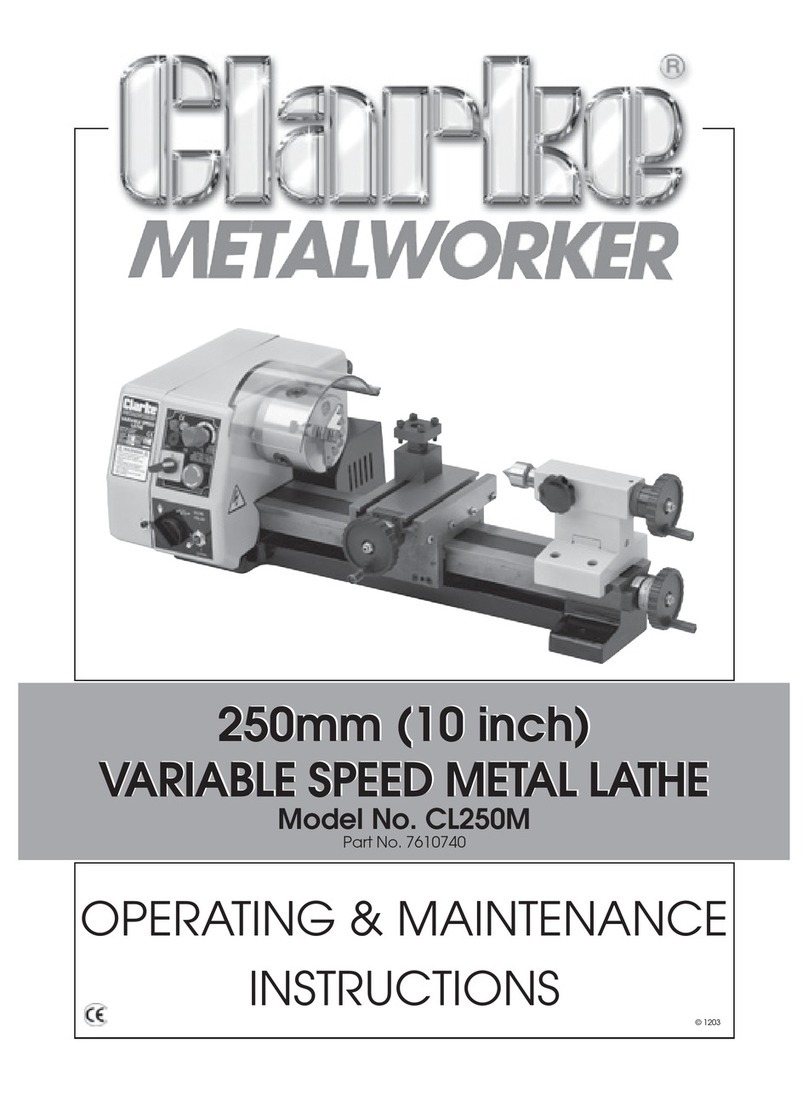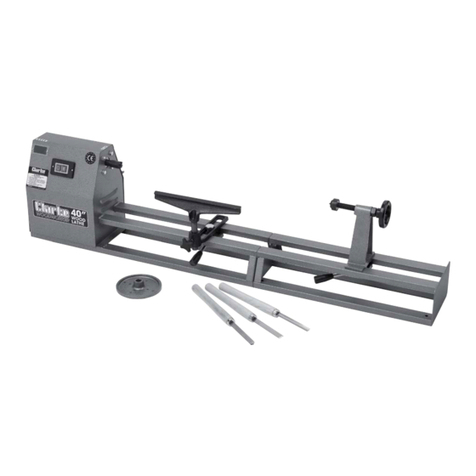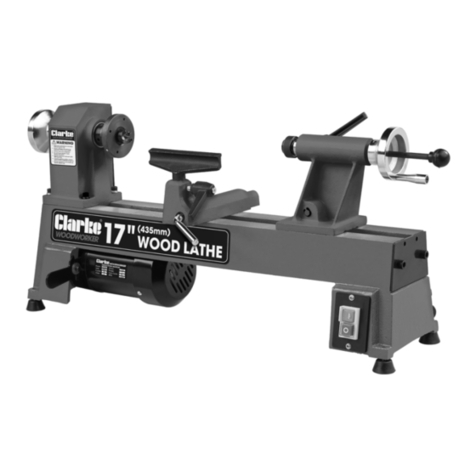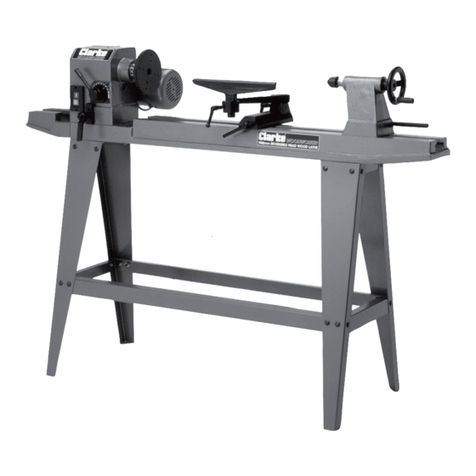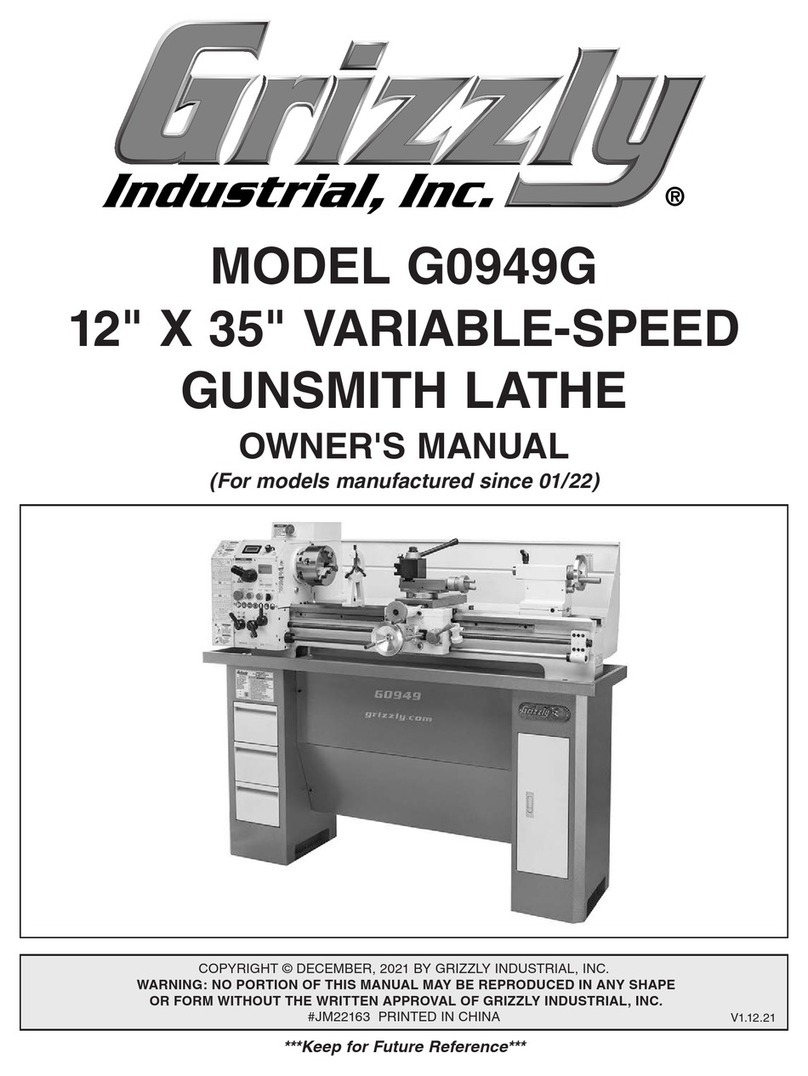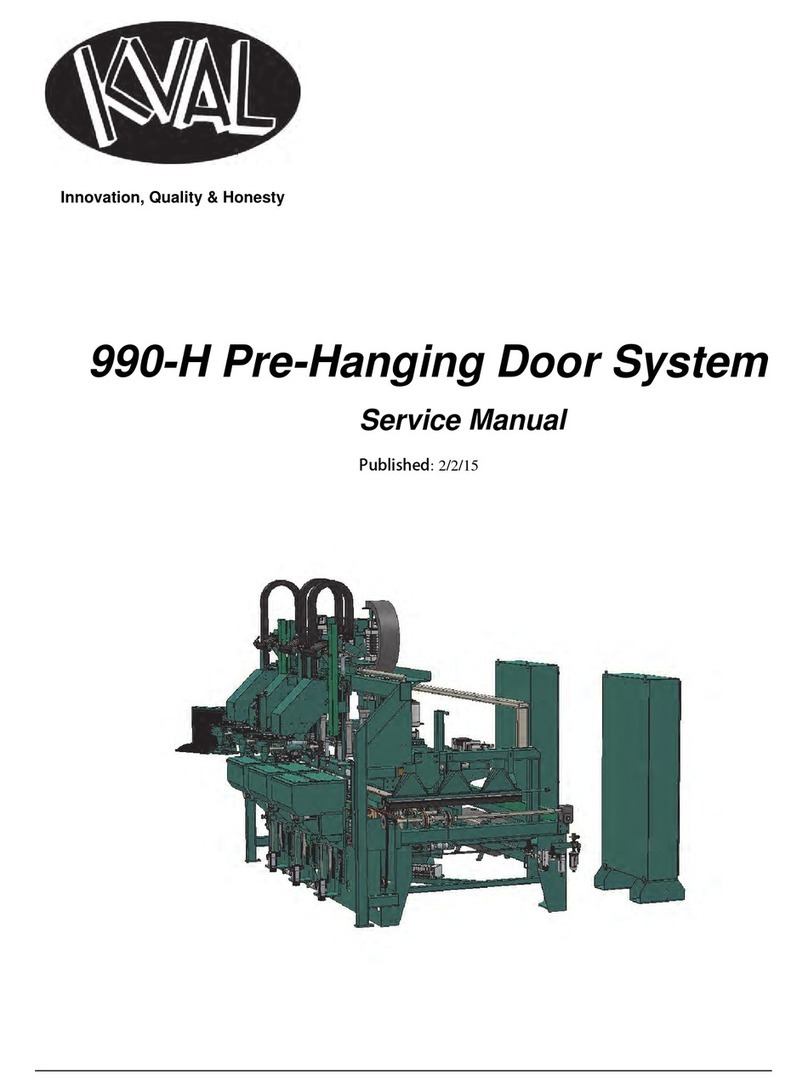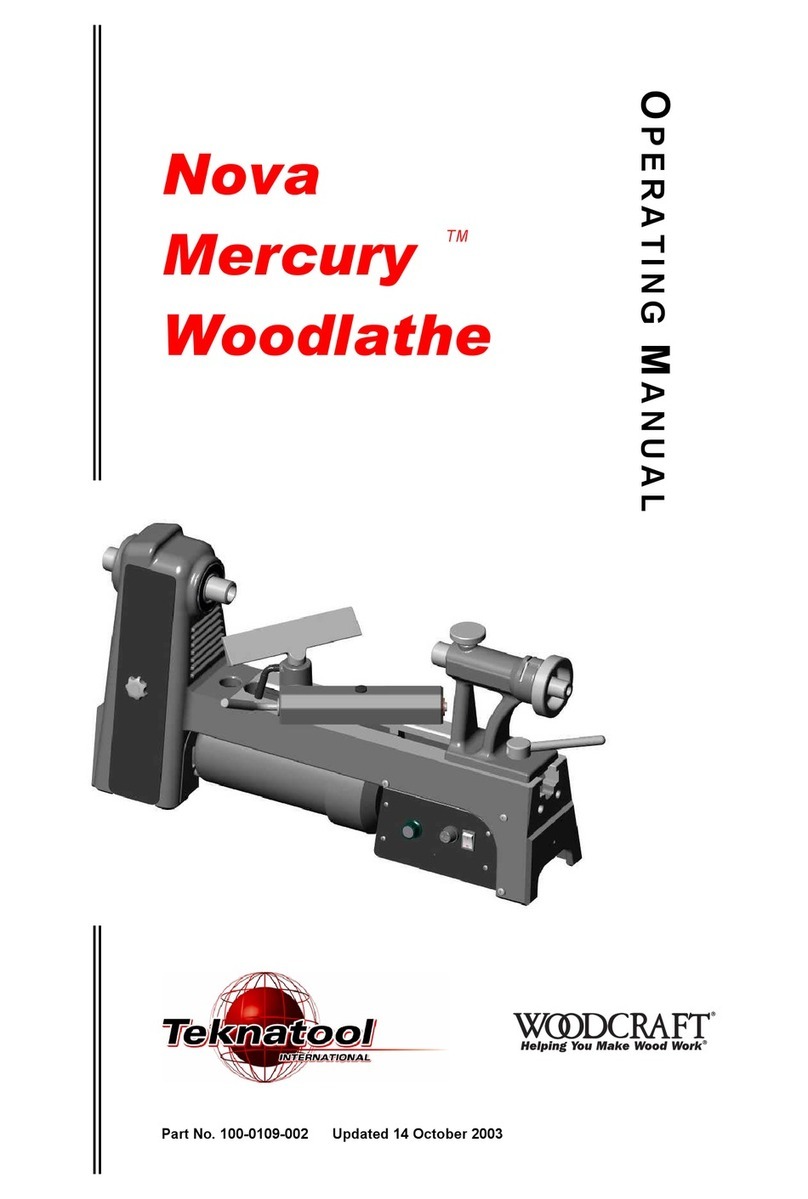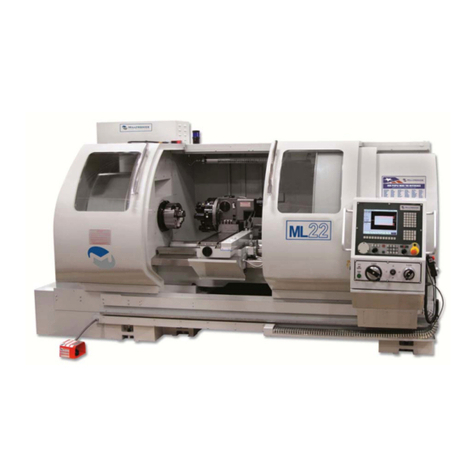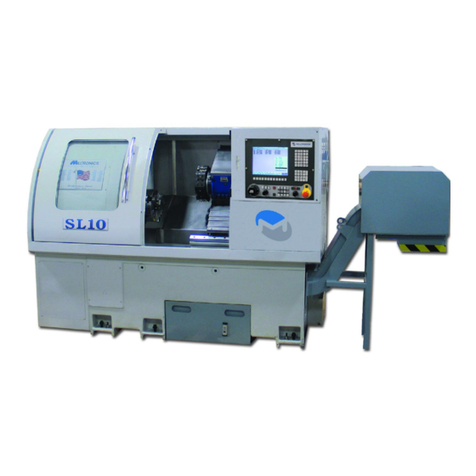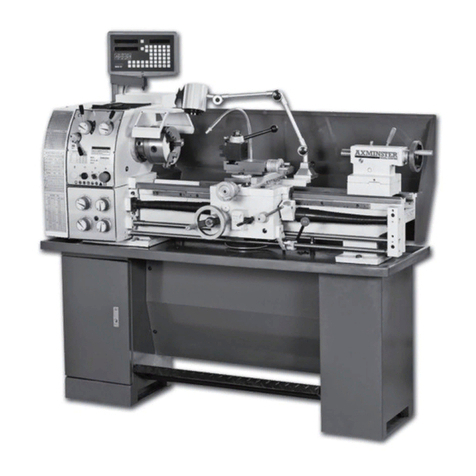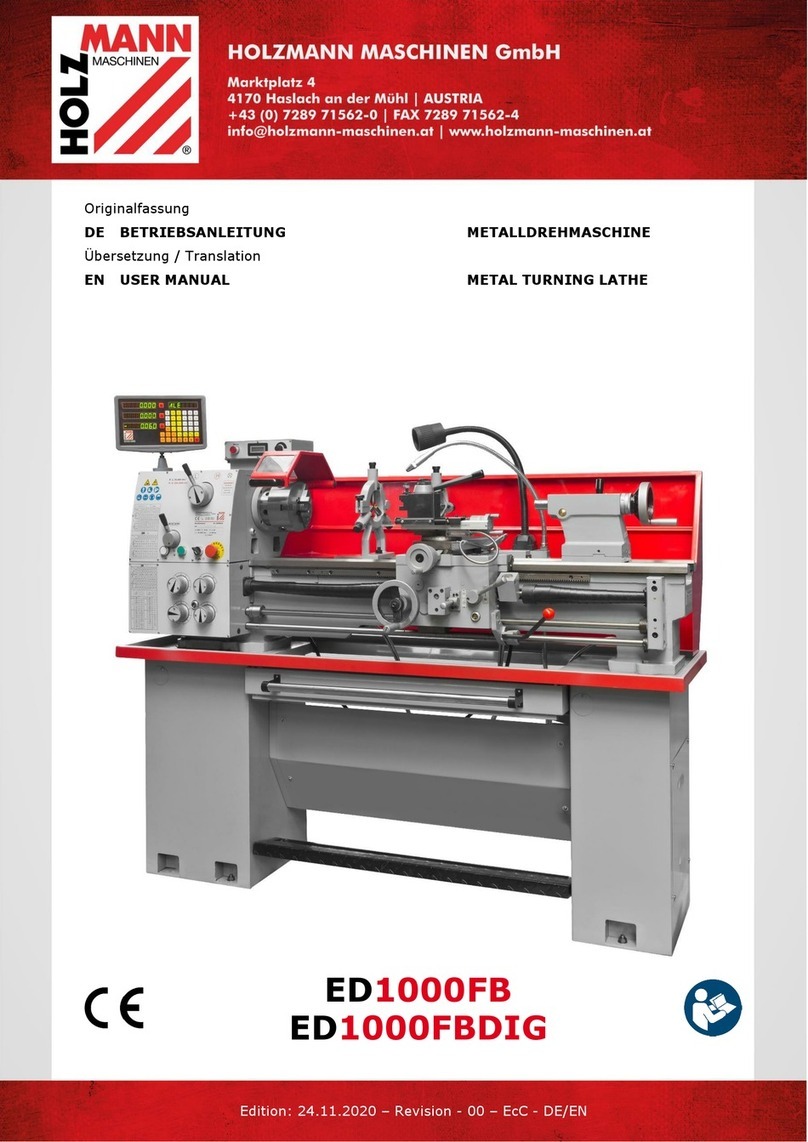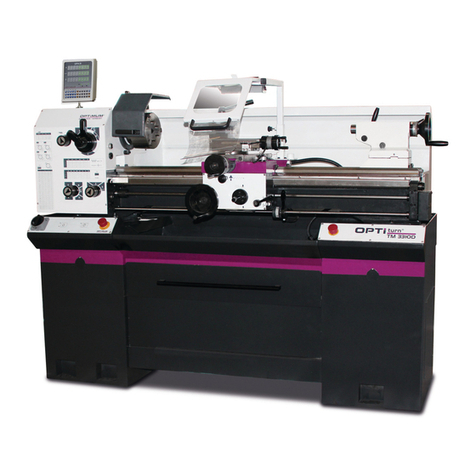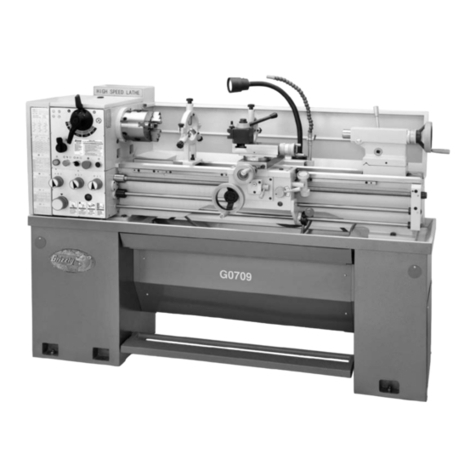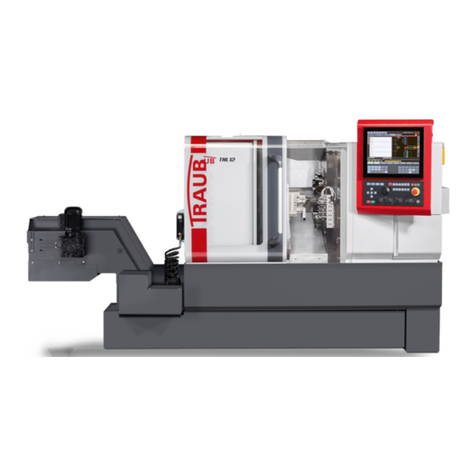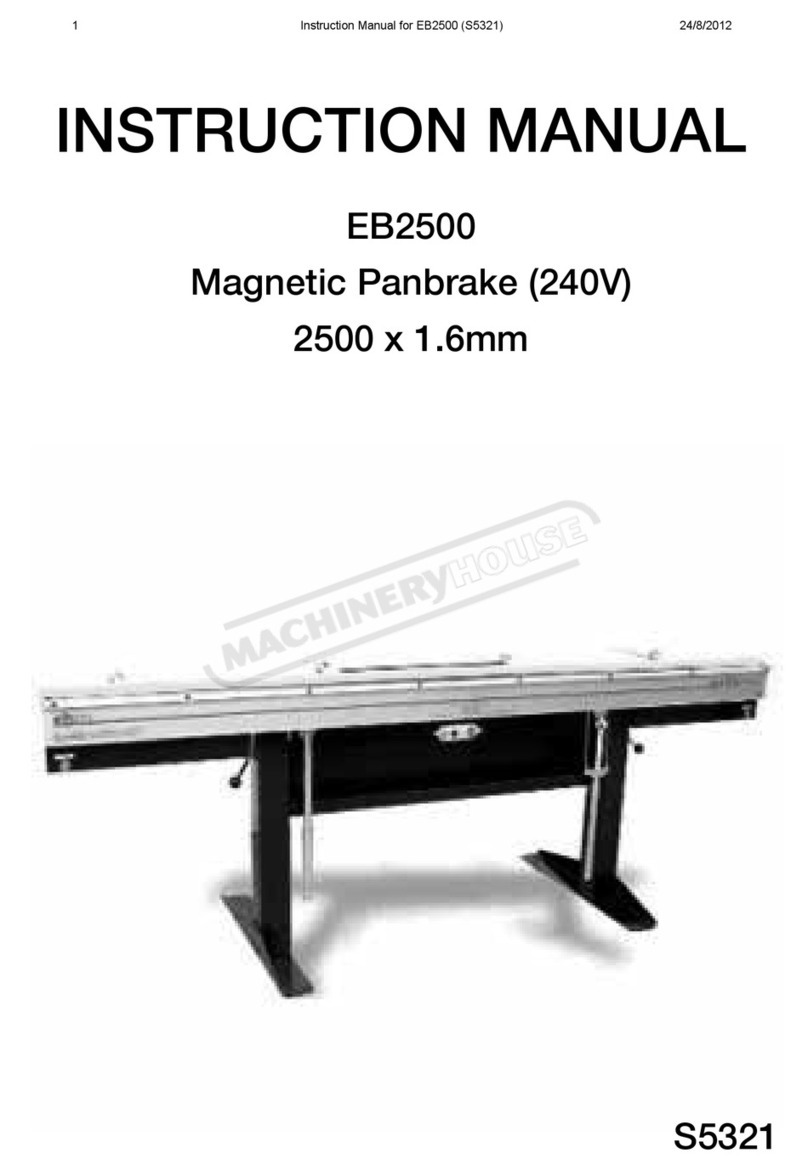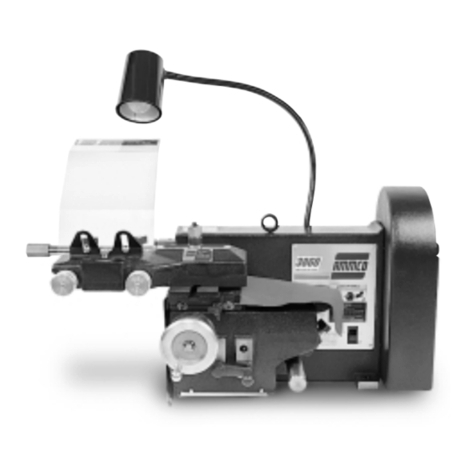
5
Parts
&
Service:
020
8988
7400
/
E-ma
il:
Parts@clarkein
ternational.com or [email protected]2. Do not use the power tool if the switch does not turn it on and off. Any
power tool that cannot be controlled with the switch is dangerous and
must be repaired.
3. Disconnect the power tool from the power supply before making any
adjustments, changing accessories, or storing the tool. These measures will
reduce the risk of the power tool starting accidently.
4. Store power tools out of the reach of children and do not allow persons
unfamiliar with these instructions to operate the power tool. Power tools are
potentially dangerous in the hands of untrained users.
5. Maintain tools in top condition. Keep tools/ machines clean for the best
and safest performance. Check for misalignment or binding of moving
parts, broken parts, or any condition that may affect the power tool’s
operation. If damaged, have the power tool repaired before use. Many
accidents are caused by poorly maintained power tools.
6. Use recommended accessories. The use of improper accessories could be
hazardous.
7. Machine cleanliness. Do not allow the ventilation slots in the machine to
become blocked with dust.
8. Check the power tool for damage before using the machine. Any
damaged part should be inspected to ensure that it will operate properly
and perform its intended function. Check for alignment of moving parts,
breakage of parts, mountings, and any other condition that may affect the
machine’s operation. Any damage should be properly repaired or the part
replaced. If in doubt, DO NOT use the machine. Consult your local dealer.
SERVICING
1. When necessary, have your power tools serviced or repaired by a qualified
person using identical replacement parts. This will ensure that the safety of
the power tool is maintained.
ADDITIONAL PRECAUTIONS FOR WOODLATHES
1. Familiarise yourself with woodlathes and turning techniques before using
the lathe. If in doubt you should consult an expert.
2. ALWAYS store chisels safely when you have finished work.
3. CAUTION: This lathe is designed for use with woodturning chisels only.
4. NEVER attempt to turn a workpiece unless a suitable support is used.
WARNING: DUST GENERATED FROM CERTAIN MATERIALS CAN BE
HAZARDOUS TO YOUR HEALTH. ALWAYS OPERATE THE LATHE IN A WELL
VENTILATED AREA. USE A DUST COLLECTION SYSTEM WHENEVER
POSSIBLE.
